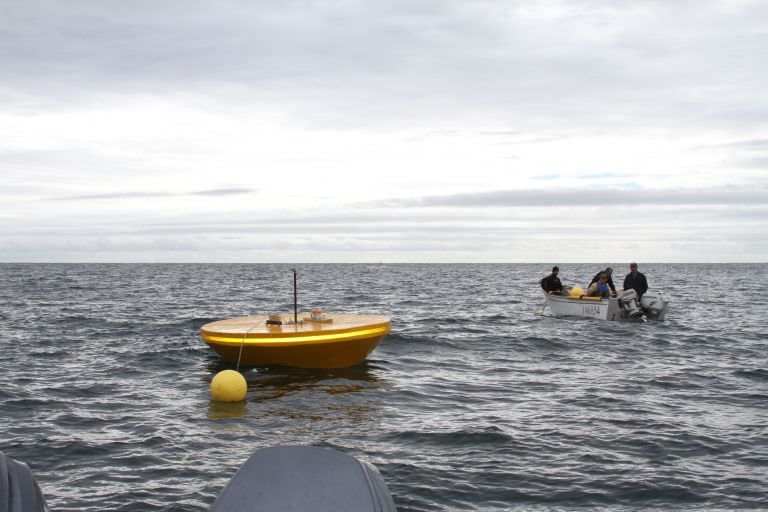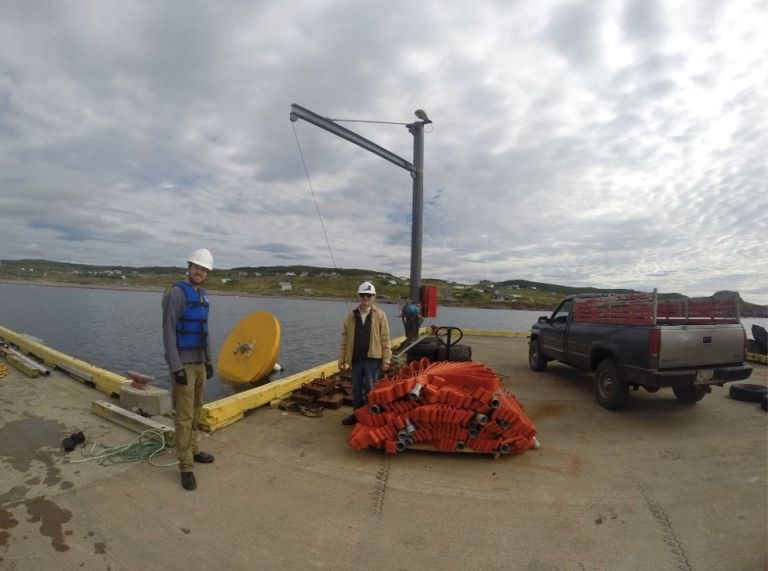Wave-Powered Water Pumps - New Source of Clean Energy
Published on by Water Network Research, Official research team of The Water Network in Technology
A simple wave energy system to pump water ashore could transform desalination and more.
Harnessing wave energy isn't a new idea. But most efforts so far have focused on generating electricity from the swells of the ocean. Christopher White, COO of Atmocean, a company that has been developing the low-tech wave energy system in landlocked Santa Fe, New Mexico, has another idea, one that would use wave energy to pump water with no need for conversion to electric power.
"With pressurized seawater arriving on shore, we can input it into a desalination facility without the need for grid-tied electricity or costly fossil fuels to run generators," White says. This system could drive down the high costs of desalination, some of which arise simply from pumping water to the plant in the first place.
"Especially in places without reliable power or water, this kind of low-tech machinery and design can be life-changing," adds Michael Graham of the Wave Environment Research Centre at the College of the North Atlantic in Newfoundland. Agriculture, potable water sources, and hygiene all stand to benefit from efficient desalination if it can be brought to remote communities, and the technology can be used as a safeguard against drought all over the world.
Working with Graham and other scientists, White oversaw the latest month-long test of wave-harnessing pumps in Canada, which represented a fifth round of sea trials. He's hopeful the system will be up and running by the end of next year, bringing with it the potential to transform an industry that, so far, has failed to come to shore.

Atmocean engineers set up a wave energy buoy pump in the Atlantic off the coast of Newfoundland.
Source: Atmocean
A HURRICANE-BORNE IDEA
Initially, Atmocean hoped to use their mechanical water pump system to combat violent hurricanes.
Two things need to be present for a hurricane to form: a disturbance in the weather, generally a thunderstorm and warm surface waters on the ocean at about 80 degrees Fahrenheit (27 degrees C). The storm pulls in warm air from the surrounding atmosphere which combines with the warm surface water of the ocean, and seawater behind to evaporate, filling the lower atmosphere with water vapor. At higher altitudes, the water vapor condenses into clouds and rain, a process that heats the air even more, causing more evaporation and rising warm winds, feeding the storm.
But if you could artificially cool the surface of the ocean as a hurricane is just getting started, the forces of the storm could theoretically be mollified.
It's an irony that the spectacle of powerful wave surges during Hurricane Katrina convinced White's boss, Atmocean CEO Philip Kithil, to try to find a way to harness that energy and mitigate the conditions that helped create it.
"Those waves near Katrina's eye were huge, and they're saying the Gulf of Mexico is at record warmth year after year," says Kithil. "What if you could capture the vertical wave motion to bring up the deeper cold water and reduce the surface temperature?"
After several incarnations of the original concept, Kithil realized that his wave action pump design could also be used to efficiently transport seawater to shore. Atmocean partnered with Albuquerque engineering firm Reytek in 2010 to manufacture the current pump system. The two companies soon began working with scientists at Sandia National Laboratories who helped assess the feasibility of their near-shore wave energy system.
"We needed to know if we would get a dribble at the end or a gusher of pressurized water," Kithil says. "Sandia helped give us the answer: a gusher."

Atmocean engineers prepare to deploy a wave energy water pump and hose in Newfoundland.
Source: Atmocean
Using wave energy to pump seawater directly into a desalination plant would also dramatically reduce the carbon footprint left behind when stripping the salt out of the sea.
HARNESSING THE OCEAN
Atmocean is trying to find a more immediate application of wave energy in their water delivery systems. Apart from needing no external power, the direct wave-to-water-pump system has the advantage of being completely viable with off-the-shelf parts, allowing local fishermen and mechanics to easily maintain and repair pumps for their communities. "If we can build it in local shops with local materials and deploy using local resources, our costs to develop the technology drop significantly," says White.
Given the constant and virtually limitless energy available from the ocean's motion, it's almost irresponsible to not try to harness that ebb and flow of the shifting sea. Beyond its immediate commercial applications, White sees the system as an open-ended means to a more sustainable end, with water that may be used for many purposes.
"True, we are focused on desalination, but pressurized water could also be used for sustainable land-based aquaculture, and even for the cooling of data centers," says White. "And, after extensive development, who knows, pressurized water...generat[ing] renewable electricity could also be on the table."
Source: Popular Mechanics
Media
Taxonomy
- Energy
- Desalination
- Energy Efficiency
- Pumps
- Energy
- Wave & Tidal Energy
- Wave Energy
- Pumps
- Wave & Tidal Energy
- Desalination
- Pump